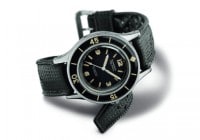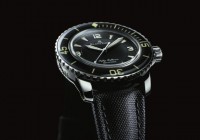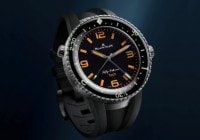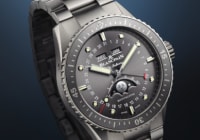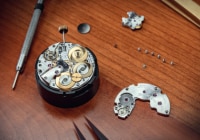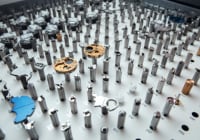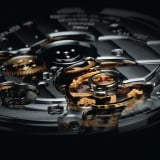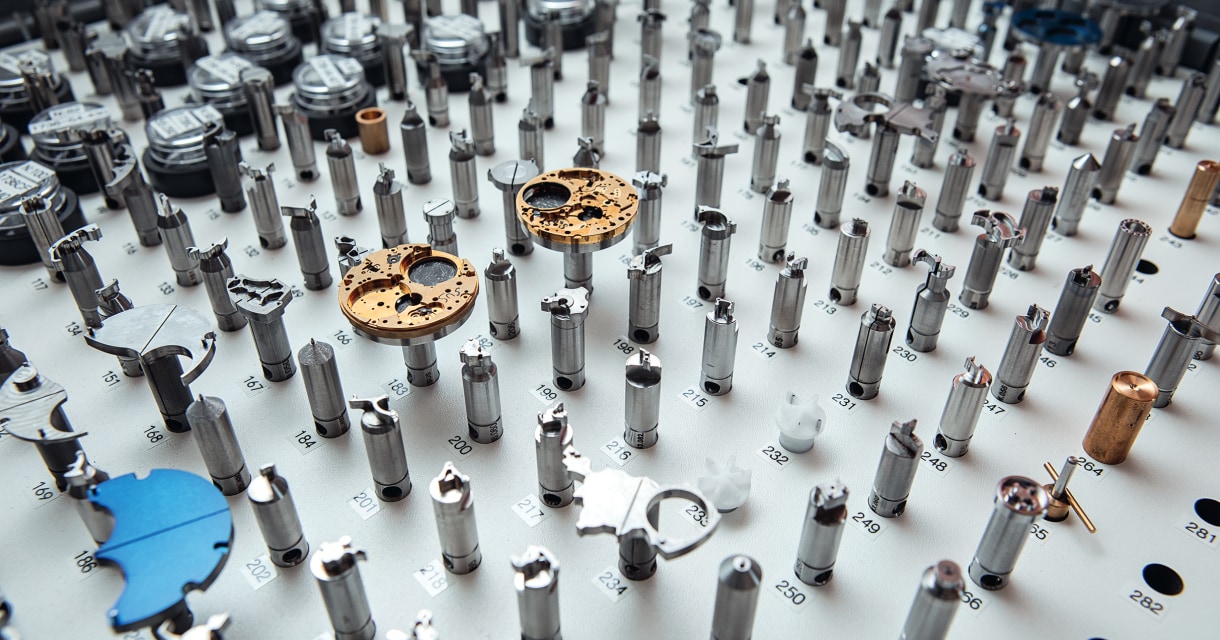
Search in Issues
Chapters
List of parts
Chapter 10
The HIDDEN FIGURES of Chronometry
Three features of Blancpain movements that enhance chronometry and performance.
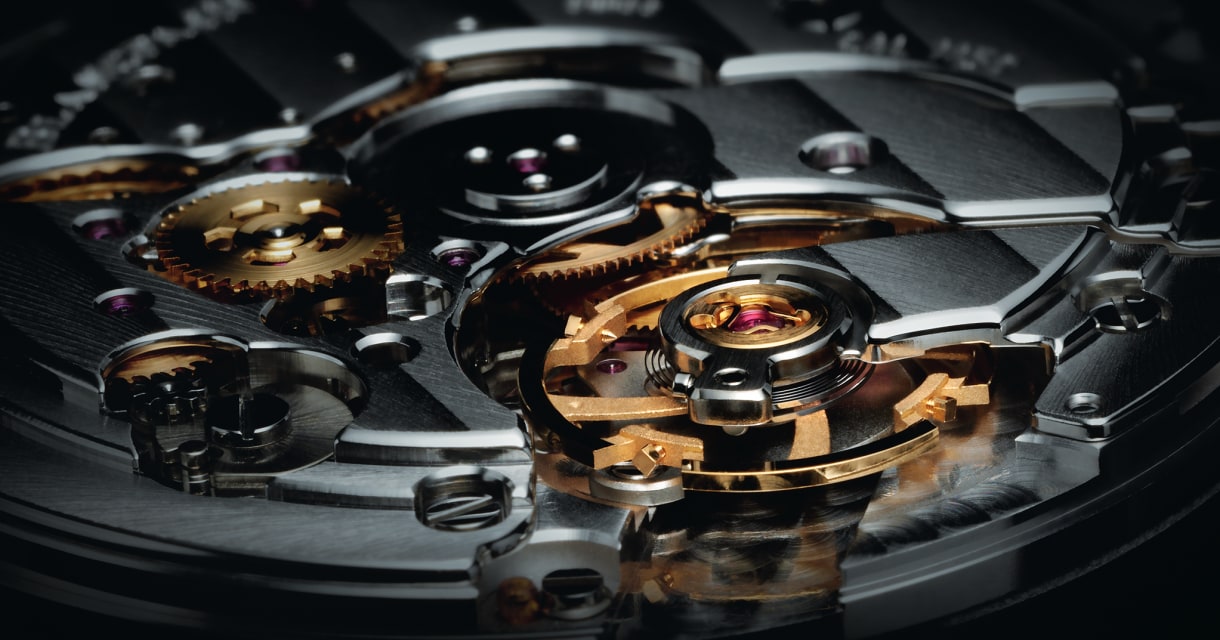
Nothing is CLOSER TO THE HEART of a watch’s timekeeping than the BALANCE WHEEL and its HAIRSPRING SPIRAL.
One of the most celebrated and inspirational films of 2019 was Hidden Figures, which recounted the story of the black women who, in the early ‘60s, labored at NASA out of view of the public. While the astronauts had acclaim showered upon them, the manual calculations that made their early space flights possible were done, hidden in the background, by these women. Indeed, even following the introduction of IBM computers to calculate the trajectories, John Glenn refused to climb aboard his rocket until these women had manually verified the numbers. Truly hidden figures.
An analogy can be drawn to elements that Blancpain has incorporated into its movements to enhance performance, robustness, and longevity. Whereas new models and complications grab the limelight, these features are quietly going about delivering value to the owner. Hidden figures. In this issue, we spotlight three examples: free sprung balances with variable inertial regulation, silicon hairsprings, and multiple mainspring barrels.
FREE SPRUNG BALANCE AND INERTIAL REGULATION
Nothing is closer to the heart of a watch’s timekeeping than the balance wheel and its hairspring spiral. The properties of both come into play in determining the rate. It is natural, then, that the systems that are employed to adjust the rate center upon them. Today, there are two principal methods for achieving the fine regulation of a watch’s timekeeping. The most common uses what is termed a “raquette”. This centers upon the hairspring spiral. The raquette is a small arm that pivots around the central axis of the balance wheel. The position of the arm either shortens or lengthens the effective length of the hairspring, thereby adjusting the rate. To regulate the watch, the watchmaker physically pushes the small raquette arm, pivoting its position and thereby finely adjusting the running rate1. The other principal method focuses upon the balance wheel and is termed “inertial regulation”. With an inertial regulation construction, the length of the hairspring is fixed, firmly attached at both ends (watchmakers use the term “free sprung balance”). To enable fine adjustment of the rate, the balance wheel is fitted with several heavy screws (in most cases, four in number), which can be screwed both inward and outward. The effect upon the rate can be analogized to a spinning ice skater. When the screws are moved outwards, inertia of the balance is increased slowing the rotation. Think of an ice skater with arms extended. When the screws are adjusted inwards, inertia is decreased, which increases the speed of rotation, much as when an ice skater pulls in arms tight to spin more rapidly.
1 Watches are most commonly adjusted in five positions: horizontal, and four different vertical positions. Although watch owners most commonly think of variations of seconds per day as the watch is worn throughout the day with the position changing constantly as the owner’s arm moves (+/- 0 per day being the ideal), rate adjustments examine the variations in each position, the average of all positions, and the greatest deviation between the positions.
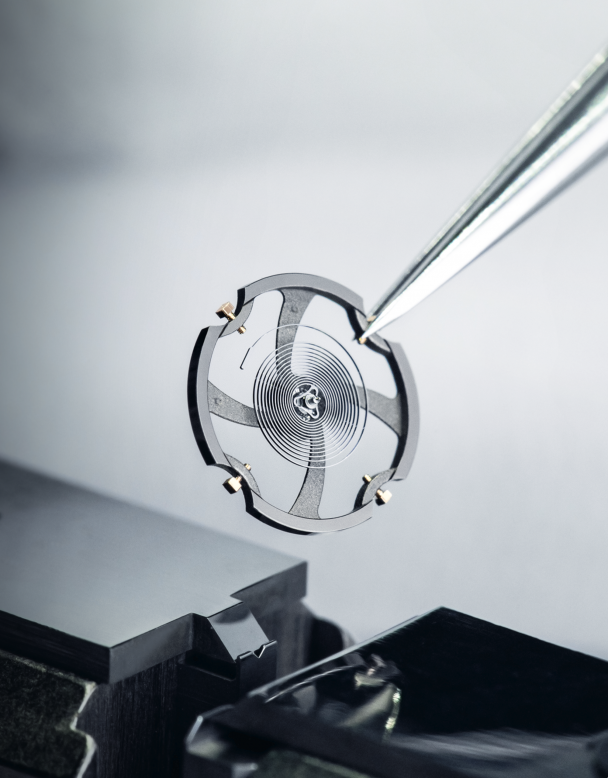
Blancpain’s titanium balance wheel with gold regulation screws.
Blancpain movements are constructed with FREE SPRUNG BALANCES and INTERTIAL REGULATION offering greater PRECISION IN REGULATION and SUPERIOR RESISTANCE TO SHOCKS.
There are multiple respects in which inertial regulation is superior to the raquette system, which is why inertial regulation is used for all of Blancpain’s movements. The first is the degree of precision in adjustment. Blancpain’s balance wheels are fitted with four gold regulating screws. The watchmakers know the precise effect on rate based upon very fine adjustments of these screws, such as a quarter turn equating to an expected change of “x” seconds per day. By contrast, with a raquette construction, rate adjustments have an element of hit and miss. The watchmaker giving the raquette arm a small push to change its position cannot be sure until testing what the change in rate will be. Second is robustness, stability, and resistance to shocks. Standard construction of a raquette arm fits its underside with two miniscule pins that flank the hairspring which passes between them. The fine adjustment can be affected by shocks in several ways. It can cause the position of the arm to move slightly, thereby changing the rate. Moreover, since the hairspring passes between two pins but is not firmly attached to them, it can move up and down in the space between the pins, which can cause small changes in rate. None of these effects apply to an inertial regulation system. Consider the differences in the way an inertial regulation system is built and the construction of its elements. The position of regulating screws remains essentially undisturbed even when exposed to a shock, unlike the pivoting arm of the raquette. Likewise, the hairspring ends are firmly fixed, rather than having the outside end pass between two pins, thereby becoming vulnerable to movement within that space.
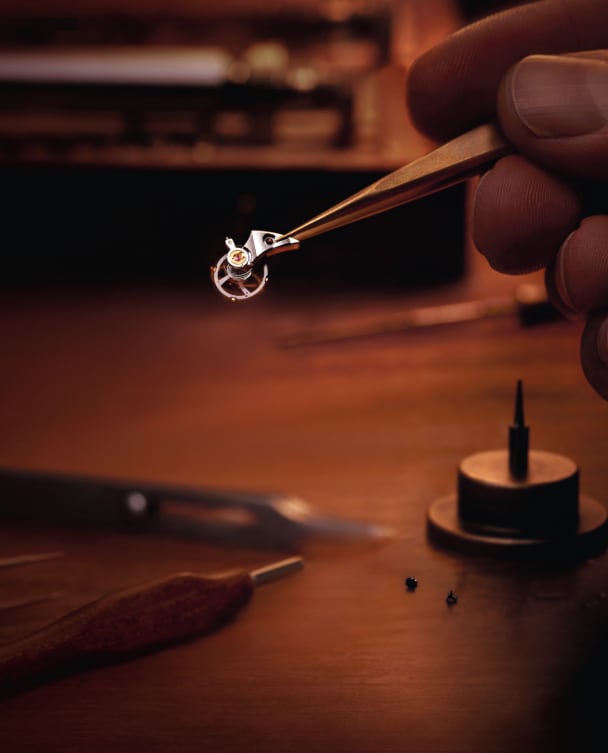
A Blancpain balance bridge carrying a free sprung balance wheel with its silicon hairspring.
SILICON HAIRSPRINGS used in Blancpain movements LEAPFROG in performance over pre-existing materials.
SILICON HAIRSPRINGS
For many years, hairsprings for Swiss watches have been constructed using a special metallic alloy such as Nivarox. Its properties represented a major advance over pre-existing materials and lead to widespread adoption by a wide swath of the industry. Silicon, which Blancpain uses in its movements, leapfrogs over all of these earlier hairspring materials. The dimensions of silicon’s advance are multiple.
First is an idealized shape. Metallic hairsprings are manufactured using a process that draws the wire into a fine diameter and bends it into a spiral. Over the years, refinements in the manufacturing method have achieved great strides in arriving at a uniform profile and spiral shape. That said, absolute perfection cannot be obtained. Silicon, on the other hand, as a high-tech material, can be produced with essentially perfect shapes. Instead of mechanically drawing metal into an ever-thinner shape and bending it, silicon spirals are produced using an advanced process involving deep engraving of silicon wafers, which produces an effectively perfect form that will remain stable and unchanged throughout its life. More than that, the process allows for variations in its profile to be incorporated into the final shape. This enables movement designers (termed “constructors”) to specify sections of the hairspring that are stiffer or more supple than other sections to optimize performance according to the particulars of the design of the movement. That degree of special adaptation to the characteristics of the movement is simply not possible with traditional metallic spirals.
Second is isochronism performance. Isochronism is a watchmaking term that addresses the effect on the running of the movement as the mainspring unwinds. How does the running change between the state of fully wound compared to nearly unwound? Generally speaking, when a watch is fully wound, the amount of force delivered to the balance wheel/hairspring/ escapement is higher than when it is nearly unwound. This has a tendency to change amplitude. Most watch owners tend to evaluate the performance of their timepieces based upon the number of seconds gained or lost per day. Watchmakers and movement designers, however, focus first upon what is termed “amplitude”. Amplitude is the measure of the number of degrees of rotation of the balance wheel (many refer to this as the “swing” of the balance wheel) with every impulse delivered by the escapement.

A titanium balance wheel with gold regulation screws and a silicon hairspring.
Among their MANY ADVANTAGES, silicon hairsprings are resistant to magnetic fields.
Ideally, amplitude falls into the range of 290 degrees of rotation. When the mainspring is fully wound, the amplitude tends to be larger than when it is nearly fully unwound2.
One characteristic of silicon that reduces the amount of isochronism errors is its response to changes in the force of the impulse as the barrel unwinds. Compared to metallic hairsprings, the effect of changes in force is significantly smaller with a silicon hairspring. For the watch owner, this translates into more even running of the watch over different states of wind.
Silicon also brings advantages to the precision of timekeeping because of its lighter weight in comparison to metallic hairsprings. Gravitational forces acting upon the balance wheel and its hairspring can induce small rate errors depending upon the position of the watch. There are a variety of reasons that underlie this phenomenon, including the displacement of the center of gravity of the hairspring from the axis of rotation, so that gravity will either increase the amplitude or cause the opposite, and differences in friction and lubrication, which appear as the position of the watch changes. As it is a lighter material, these effects are diminished with silicon.
There is also a benefit in its resistance to magnetism. Silicon is non-magnetic, meaning that it is not affected by magnetic fields. If a metallic spiral composed of a magnetic material is exposed to a sufficiently strong magnetic field, its fine segments can become magnetized. As a result, some elements are attracted to other segments of the spiral, while others are repelled. In both cases, this residual magnetism changes the characteristics of the spiral and, hence, the running of the timepiece. Silicon is not subject to becoming magnetized and thus avoids this problem.
Not to be overlooked are the effects of age on the characteristics of spirals. Over time, with traditional spiral materials, one may witness changes in stiffness that may negatively manifest themselves in both the running rate and isochronism. In contrast, silicon remains stable and is not subject to metal fatigue as the watch ages.
2 Somewhat paradoxically, when the amplitude is greatest at full wind, the running rate is somewhat slower than when amplitude falls approaching unwound. Said another way, the watch rate will tend to increase as the barrel unwinds. One way to view this phenomenon is to understand that it takes less time for the balance wheel to complete its rotation when the number of degrees of swing is less than when it is at its maximum.
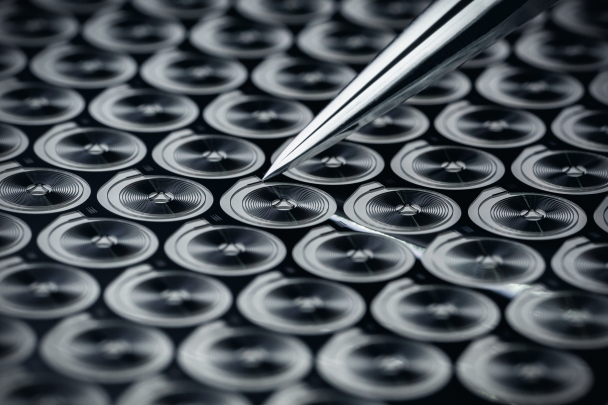
Fabrication of silicon hairsprings.
MULTIPLE mainspring barrels even out the delivery of energy over different states of wind.
MULTIPLE MAINSPRING BARRELS
Many of Blancpain’s movements feature multiple mainspring barrels: one series of movements with two, the other series with three. Of course, utilizing two or three barrels to power the movement enables long power reserves—up to eight days with three barrels. However, the length of the power reserve is only part of the story. Equally vital is how the movement will perform over an extended period. Said another way, what is the isochronism performance?
In its multiple barrel movements, Blancpain connects the barrels in series. The “outermost” barrel is the one directly connected to the winding components, either via the crown or through the automatic winding system. The “innermost” barrel is directly connected to the running train of the watch. Clever design is required to even out the power delivery over different states of wind. The general idea is to have the outermost barrel (or barrels in the case of three) replenish the innermost barrel as that barrel unwinds. In this way, the regulating system of the watch (balance wheel/spiral/escapement) sees largely constant torque as the barrels unwind, enhancing isochronism performance. The general principle is easy to express but requires careful design study to implement. The trick is the careful calculation by Blancpain’smovement engineers of the characteristics of the mainsprings for the barrels. The innermost barrel is designed with a mainspring less powerful than the outer barrels. In this way, as it unwinds, the more powerful barrel(s) connected to it will rewind its mainspring.
There is a common thread that emerges from the study of these design features. Each one may exist backstage and out of the spotlight, but each one elevates the performance of Blancpain movements in important ways.
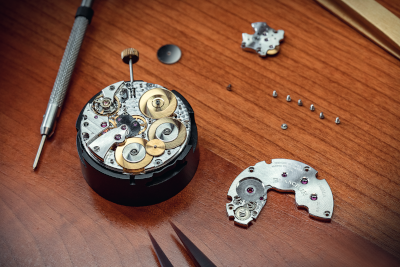
The three barrels, connected in series, placed onto the mainplate.
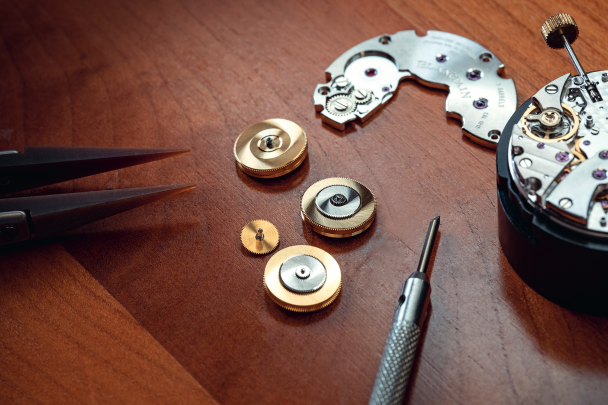
The three mainspring barrels ready to be inserted into the movement.
Other issues
Don't miss the latest issue
Sign Up for New Releases

